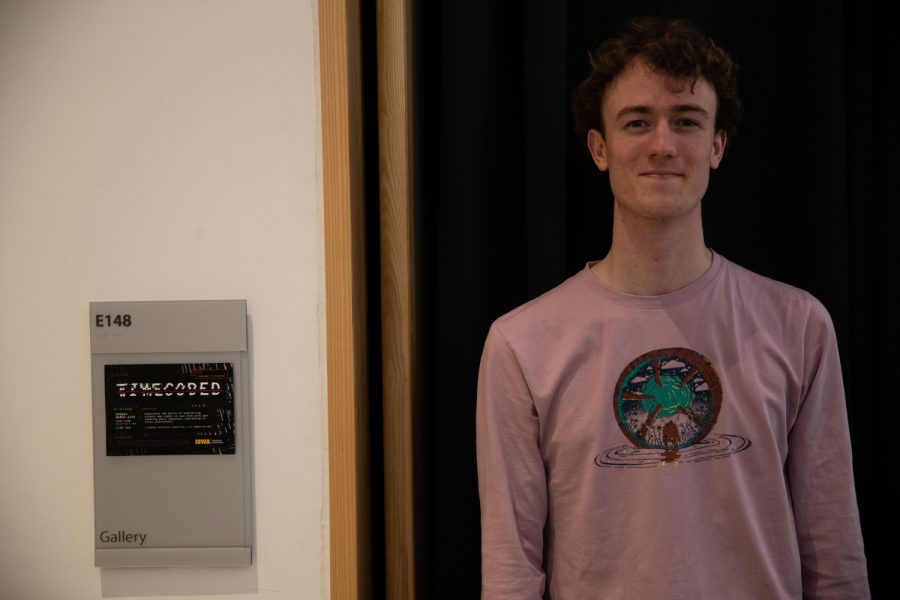Student Spotlight: Graphic design student combines myriad of visuals, lights, and sounds in exhibition
Conrad Hellman’s BFA exhibition “TIMECODED” explores programming to link visual designs, lights, music, and sound interactively to provide a synced experience at live dance events.
Iowa art major student Conrad Hellman poses for a portrait for his graphic design BFA exhibition in front of room E148 on March 24 in the Visual Art Building, Iowa City, Iowa.
March 27, 2023
Electronic dance music, known as EDM, is University of Iowa student Conrad Hellman’s heart and inspiration.
Hellman is a graphic design student pursuing his Bachelor of Fine Arts as well as his Bachelor of Arts in marketing. His most recent exhibition on March 24 explored software that links projected visuals, lights, and sounds to the press of one button.
“I’m going to a lot of [EDM] shows around [Iowa City] and wanting to put my own spin on it. I have a background in a lot of music-related video game stuff,” Hellman said.
Hellman’s exhibit “TIMECODED” was displayed in the Visual Arts Building. The outside of the exhibit was unassuming: only a black curtain as a portal. Stepping inside, audiences were teleported into a miniature EDM club: dubstep, strobe lights, and moving images crowding the senses.
In the middle of the room sat a table with an interactive touchscreen, a touchpad, and a dial board. The touchscreen listed a tutorial detailing the interactive steps the user could take, including changes to the direction of lights and music and shifts in visuals.
Hellman spent a year developing the exhibition.
“Everything here is happening altogether,” Hellman said. “My biggest challenge was making it run on my hardware.”
For visuals like his to have the highest resolution, a lot of computer memory is required, so Hellman could only have six different modes for audiences to interact with. This program at the exhibition was made using software called Touch Designer, which is a “visual coding system for making media systems and doing generative art.”
Hellman said during live dance events, audio, visuals, and lights are all controlled by three different creatives that have to synchronize to create the experience of a live dance event. His system allows there to be a minimum of one person controlling all three simultaneously, which is called a visual system.
RELATED: Student Spotlight: Photography MFA student Annie Hodgkins creates fragrance from own sweat
Hellman’s aim is to control the board like an instrument itself, linking it to possibly his own music for shows. This is a product that DJs could potentially sell as packages for music, light, and visual design in a club.
Projected visuals — which Hellman said were created with projected mapping — consisted of psychedelic patterns and colors, each vastly different from one another in the exhibit. They would change direction, flow, or pattern based on what buttons the operator was hitting or turning.
“This software does that, so you could do it pretty easily,” Hellman said.



